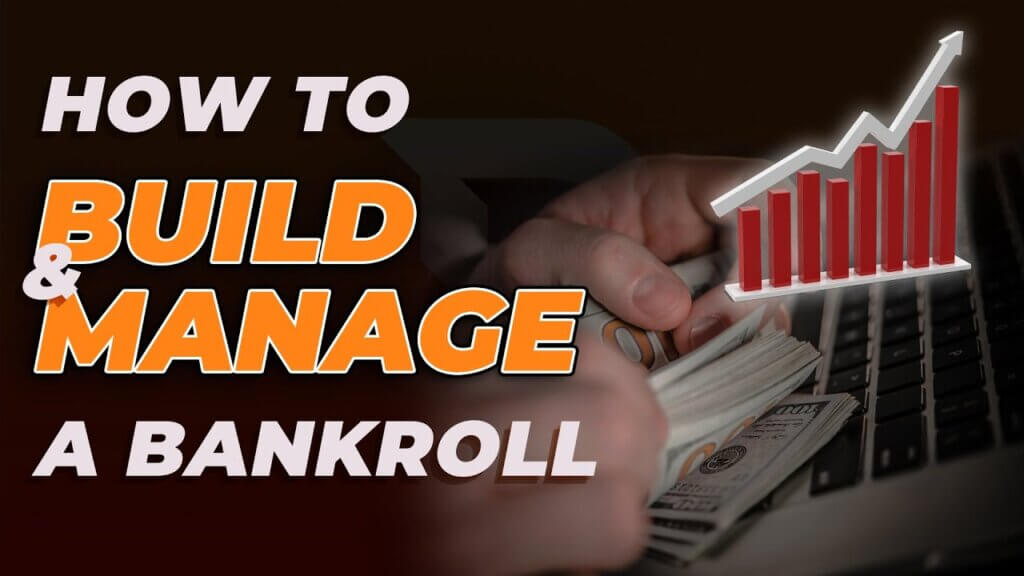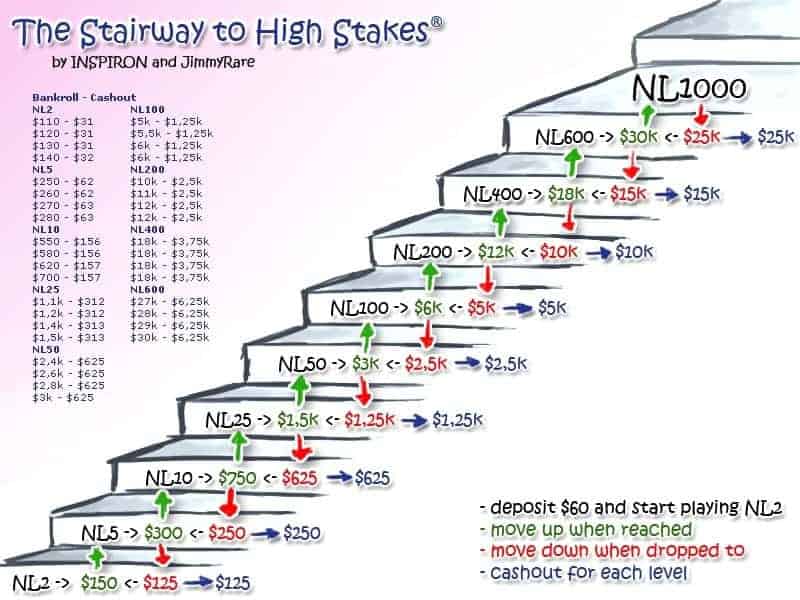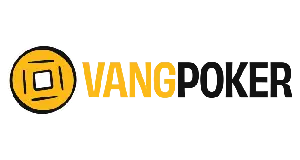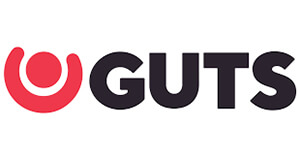A very important skill in progressing as a poker player is building your poker bankroll. Poker coach John “WhatA298” Bradley explains how to do it the right way in our latest poker strategy article.

Often you have the technical skill and know-how to be winning in higher stakes games than we currently play in but you are not able to play in those games in good conscience due to not having the requisite bankroll.
We often focus on growing through improving our strategic abilities at the table, but it can be just as important to improve our strategy in relation to our bankroll.
Why is having a bigger poker bankroll so important?
Most people’s dream when they enter poker is to be playing the highest stakes possible, against the best players, traveling the world and making lots of money in the process.
You inherently realize that this will require to improve your skill as a poker player, but it’s important to note you also must have the financial backing to enter those stakes no matter what our skill level is.
Poker is a game with a great deal of variance and so, no matter how skilled you are, you just can’t sustainably enter a $100K buy-in cash game with only $100K in our bankroll. To do so would be just gambling and I don’t think that is part of the dream.
To sit in a $100K buy-in cash game, you need at least $2M in your bankroll and even that is very, very dangerous.
If you can play in that game though, even small edges on our competition will result in a large amount of real world money.
At a $200 buy-in cash game, you could be by far the best player in the game and winning at a massive 20bb/100; bringing home $40 every 100 hands.
At a $100K buy-in cash game you can be an unbelievably marginal winner at 0.5bb/100 and you are bringing home $500 every 100 hands. The real world effects of playing higher stakes are obvious.
Why do you need many times the buy-in to sit in these games?
Poker is a game of skill, but in the short term there is also luck involved.

The larger the sample size you are looking at in poker, the less of a factor luck is. However, when looking at small sample sizes, such as one session, luck becomes the primary factor.
Therefore, if you sit at a table with your bankroll on the line, you are gambling plain and simple.
No amount of skill can make up for the element of luck inherent in the game and therefore you have no control over the outcome of your bankroll and so it may go to zero.
Bankroll management is an effort to reduce the chances of your poker bankroll going to zero
Bankroll management is an effort to reduce the chances of your poker bankroll going to zero.
The more buy-ins you have in your bankroll, the less the chance that you are going broke.
If you follow the 20 buy-in rule, and move up or down stakes, when you have the requisite buy-ins, then it is very hard for ever lose your entire bankroll.
If you are on the wrong side of variance, then you will be moving down stakes and playing for less money, so your bankroll will reduce at a slower rate.
When you are on an upswing, your poker bankroll will be utilized effectively to maximize your growth.
Bankroll management in online poker is a topic in itself, so I will leave it for another article, but suffice to say that it must be adhered to at least to some extent otherwise we are not growing our bankroll effectively, professionally and responsibly.
You are simply gambling and hoping things go our way.
How do we get a bigger poker bankroll?
A lot of it will be through working smarter rather than harder with respect to which games we choose to play, whether we choose to get staked, how we decide to use our time etc.
Some sacrifices may need to be made however, but I would like to show how these sacrifices are worth it for you in the long run.
Much like how investing for the future yields exponential growth through compound interest, reinvesting profits back into your poker bankroll yields exponential growth as well.

It directly grows your bankroll, while allowing you to play higher stakes and earn more, then you can reinvest more and so on.
I often compare grinding small stakes in poker as similar to working an entry level job at a big corporation or going to University.
You put in many, many hours without requisite reward to gain oversized rewards in the future.
The beauty of poker in comparison to these systems is that the progress is a lot quicker and there is no office politics.
If you double the stakes you are playing, you will nearly double your salary. Whereas in a regular job you may need to get promoted multiple times to be able to do this.
The fundamentals to increase your poker bankroll
Let’s take a look at the fundamentals to increases your poker bankroll:
Our life expenses is an often underlestimated reason why our bankroll isn’t growing as quickly as we might like.
Very similar to building wealth for retirement, it can be our expenses, which are causing the problem.
If you are a professional poker player, then you will usually take out money from your bankroll monthly for rent, food, bills etc. This makes increasing your poker bankroll substantially harder.
As a non-professional you have the benefit of less outgoings from your bankroll but usually you will have less time to focus on poker and that becomes the difficulty.
Reducing your expenses can speed up the progress very fast: “A penny saved is a penny earned”.
Reducing your monthly expenses by $100/month will have the same effect on your poker bankroll as making a few better river decisions per month and increasing your winrate slightly.
So, the first thing to do to speed up your rate of bankroll growth is to make sure your outgoings are as low as possible.
Sacrificing here can make all the difference and it is a good lesson in delayed gratification and patience.
Your expenses are streamlined, now what?
While decreasing your expenses is very important in growing your poker bankroll, so too is increasing your income.
It is particularly important to be aware of how time figures into the calculation.
Your outgoings, once minimized, are fixed and will be coming out of your poker bankroll every 30 days or so.
Your incomings are not fixed. Ideally we would increase the amount of hours per month that we play but of course there are only a certain amount of hours in a day/week/month.
However, we can make the hours we do play poker more efficient and every small change that we make to our $/hour will positively impact our bankroll growth.
We tend to focus on our bb/100 in cash games or ROI in poker tournaments as the indicator for how much money we are making.
However, it is just as important how many hands we play per hour and how much we make in rakeback and bonuses per 100 hands.
In tournaments it’s important to know how many hands an average tournament lasts as well.
It may be better for your $/hour to play a tournament, where you have a lower ROI, because the tournament lasts a shorter amount of hands on average.
- Hourly Income = Hands/hr x $/hand
- Profits = Hourly Income x Hours Played
- Bankroll Increase = Profits – Expenses
Increasing your $/hand
In order to be able to increase the amount of money you make per hand, you should focus on improving your play. T
This is very important and I offer a free poker coaching service here to help you in this aspect of the process.
However, you should also analyze all the different game types you play to determine, which games have the highest $/hand.
Factors to consider include:
- Rakeback
- Deposit Bonuses
- Early Bird Bonuses
- Duration of the tournament
For example, if I were choosing which tournament type had the highest $/hand I would look at the average tournament duration:
- Regular Speed ~100 hands
- Turbo Speed ~50 hands
- Spin and Go ~20 hands
Assuming this is our ROI in each:
- Regular Speed 30%
- Turbo Speed 20%
- Spin and Go 5%
And we are playing $100 tournaments with 5% rakeback, this would be the $/1,000 hands for each game type:
- Regular Speed 10 (tournaments) x [$30 (per tournament winnings) + $5 (per tournament rakeback)] = $350
- Turbo Speed 20 (tournaments) x [$20 (per tournament winnings) + $5 (per tournament rakeback)] = $500
- Spin and Go 50 (tournaments) x [$5 (per tournament winnings) + $5 (per tournament rakeback)] = $500
In this example, despite having the highest ROI in the regular speed tournaments, we would be better off playing the turbo tournaments or Spin and Gos.
Surprisingly, we make more per hand with a marginal winrate in Spin and Gos, than with a really good winrate in the regular speed tournaments.
This is because of how short the spin and go is plus you are generating a lot more rakeback, which makes up for not winning so much at the tables.
Increasing your hands per hour
The previous example highlights how having a bigger edge is not the only factor in determining our hourly income. Another factor is how many hands we play in an hour.
In live poker this is fixed by the physical fact that we can only play one table at a time and thus we are limited to approximately 40 hands/hour.
In online poker we can play as many tables simultaneously as we can manage and this provides us with an excellent opportunity for poker bankroll growth.
Advice very often suggests not playing additional tables once your quality of play is affected, but from the point of view of bankroll growth this isn’t necessarily the best advice.
As seen above, we can make less per tournament but still make more per hand, if the tournament takes less time.
Similarly we can make less money per hand and make more money per hour, if we play more hands in that hour.
It is personal preference how many tables you play but the more important bankroll growth is to your current goals, the more you should push yourself to play more tables assuming you know that you are a winning player.
A cash game example: You are a reasonable NL200 cash game regular with a 3bb/100 winrate, while playing 2 fast-fold tables.
If we add more tables our winrate begins to drop off. Our hourly income would be:
- 2 Tables = 400 hands/hr @ 3bb/100 or $6/100 hands = $24/hour
- 4 Tables = 800 hands/hr @ 2.5bb/100 or $5/100 hands = $40/hour
- 6 Tables = 1200 hands/hr @ 2bb/100 or $4/100 hands = $48/hour
- 8 Tables = 1600 hands/hr @ 1bb/100 or $2/100 hands = $32/hour
In this example, you should play 6 tables, despite having a lower winrate than if we are playing 2 tables.
You would be ill advised to play more than 6 tables at a time. However, as your winrate seems to reduce by more than is gained through playing more hands per hour.
There will always be a sweet spot and this sweet spot will be different for different people and may even differ for an individual day to day.
Other ways to increase your hourly income
As mentioned above, playing higher stakes is a very good way to increase your hourly income and that is the reason for increasing your bankroll in the first place.
However, we can find ways to play higher stakes without having a higher bankroll by utilizing flexible bankroll management and staking.
Flexible bankroll management and staking
Flexible bankroll management is a system, where you are happy to move up and down the stakes very quickly.
If you are willing, and able, to very often move up stakes in an upswing and, most importantly, down in a downswing; then you can loosen your requirement for the amount of buy-ins.
You could require only $4,000 in your bankroll instead of $8,000 to play NL200 cash games.
You could play NL200 with a $4,000 bankroll instead of NL100. This strategy is a bit more volatile and requires you to be self-disciplined enough to move up and down stakes when you need to, but it can also be another tool to fast-track your bankroll growth.
Staking and selling your action can be an incredibly useful tool in aiding us to play higher stakes than our bankroll management strategy allows.
You can now sell action through a number of online platforms such as GGPoker, which fast-tracks the whole process and makes it very safe.
Essentially, the portion of the buy-ins, which you cover, is the buy-in figure which is relevant for your bankroll management calculations.
Example: If you sell 50% of your action in a $100 tournament, you would only need a poker bankroll that supports you playing $50 tournaments.
Even if you sell your action for less than it’s worth, thus giving the backer some profit, you can still be better off than if you had 100% of your action at a lower stake.
Let’s look at an example where you have a bankroll, which can support playing $50 tournaments and you are deciding between playing $50 tournaments and selling 50% of your action in $100 tournaments:
- $50 tournament with ROI of 30% = $15/tournament
- $100 tournament with ROI of 25% selling 50% at 1.1 = Our 50% action + 50% sold action = (0.5*25) + (0.5*10) = $22.50/tournament
You can see here that, despite having a lower ROI in the higher stake game and selling your action at 1.1, when it’s worth 1.25 (thus giving the backer a 15% return), you are actually better off playing the $100 tournament selling 50% of the action.
Rakeback is the easiest way to grow your poker bankroll
The probably most important and fastest way to grow a poker bankroll is having the best rakeback deals.
When you sell action through sites such as GGPoker, then you get 100% rakeback, no matter how much you sell.
Rakeback on a $100 tournament is double that of a $50 tournament, so this is another reason to consider this option.
IMPORTANT: The higher stakes you play, the more rakeback you earn.
How to increase your hours played?
You also want to increase how many hours you play per month.
In addition to that, time playing can have diminishing returns, if we play too much and so it can, similar to adding tables, become detrimental.
One thing to consider is how much time to spend playing compared to studying.
If you are a losing player then studying is very important, but once you become a winning player you should be aware that there is an opportunity cost every time you study.
When you study, your hourly income is $0 and so what you are studying needs to be very, very beneficial to outweigh the amount of money that you are losing through not playing.
Remember that your expenses still exist, but you are reducing your Profits to $0. That means you need to be sure that it’s worth it.
Conclusion
The bankroll building process is a fundamental skill within poker and a very useful skill to have in life more broadly.
There are many ways to increase your poker bankroll more effectively without increasing the quality of your play.
If you give yourself some time to work smarter, then you can increase your poker bankroll quicker and fulfil your dreams sooner.
Good luck on your journey and if you have any questions, please do not hesitate to ask them in the poker coaching section of the VIP-Grinders Discord Channel.
- Join our Telegram or Discord channel to get free poker coaching
- Get the best rakeback deals
- View all poker strategy articles
- View the latest poker news
- Watch more poker videos
- Get the biggest poker bonus
- Watch the best Twitch Poker streamers
Terms and conditions apply. New customer offer and 18+ only. Please gamble responsibly! Should you require help regarding your betting pattern, visit www.begambleaware.org























